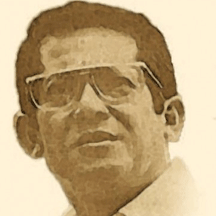If you compared all the Philippine national heroes from Lapu-Lapu to Cory Aquino, it is unlikely that you will find two more uncannily similar heroic figures – in how they lived and in how they died – than Dr. Jose Rizal and Benigno “Ninoy” Aquino Jr.
Both came from similar backgrounds: Their families were below haciendero level landed gentry, both studied at the elite Ateneo school, traveled extensively, wrote prolifically, and returned to the Philippines despite warnings that they faced certain death upon setting foot on native soil.


Both were tried on sham charges by kangaroo courts which sentenced them to death. Both were executed by the powerful forces who feared their return and each of their deaths sparked revolutions that overthrew the tyrannies that caused their martyrdoms.
Rizal and Aquino fit the textbook model of a “tragic hero” born of privilege, imbued with heroic qualities, and fated to endure great suffering. In the classic mold, Prof. Ronald Santora relates, “the hero struggles mightily against this fate and this cosmic conflict wins our admiration.”
Why did Dr. Jose Rizal in 1892 and Ninoy Aquino in 1983 return to the Philippines knowing of the certain tragedy that awaited them upon their arrival? Was it fate or free will?
Dr. Jose Rizal lived and studied in Europe for almost a decade, obtaining advanced degrees in fine arts, medicine (ophthalmology), and even a doctorate in languages. Rizal also wrote two novels, Noli Mi Tangere and El Filibusterismo, which exposed Spanish abuses in the Philippines.
Aside from his academic achievements, Rizal also immersed himself in the Filipino expatriate movement for reforms, organizing forums and contributing regular editorial essays to the movement’s main journal, La Solidaridad.
On November 20, 1891, Rizal moved to Hong Kong and established a private practice in ophthalmology which drew patients from throughout the crown colony. Before the end of the year, Rizal was able to get his parents and siblings to live with him in a comfortable home in Hong Kong.
While Rizal was overjoyed to be finally reunited with his family, he was deeply dismayed by the factionalism and lack of unity that plagued the Filipino expatriate movement in Europe. As Jose Baron Fernandez noted in his book, (Jose Rizal: Filipino Doctor and Patriot, 1980):
“During the first two months in 1892, the propaganda campaign was in disarray; (Marcelo) Del Pilar in Madrid, abandoned by all except his brother-in-law, (Graciano) Lopez-Jaena in Barcelona, very skeptical of La Propaganda, with its utter neglect of its obligations, and, finally, the new committee of La Propaganda which proposed to Rizal the launching of a new fortnightly paper, as well as the organization of a new party, the Rizalist party. Meanwhile, from Paris came news of the formation of a revolutionary organization called Katipunan (headed by Andres Bonifacio).”
Ninoy Aquino had been incarcerated in solitary confinement by the dictator Ferdinand Marcos for almost eight years by May of 1980, when he suffered two severe heart attacks within a week of each other. Because of fear of negative publicity if Aquino died while under military custody, First Lady Imelda Marcos ordered him released and quickly flown to the US on May 9, 1980. Everyone expected him to die on an operating table at a hospital in Dallas, Texas, but Aquino defied the odds and survived.
After recuperating from heart surgery, Aquino spent three years in the US, setting up a home in the Boston suburb of Newton, Massachusetts with his wife Cory and all their kids. He received fellowship grants from Harvard University and the Massachusetts Institute of Technology, worked on the manuscripts of two books, and delivered speeches throughout the US denouncing Marcos and martial law.
Aquino found himself caught in the factional intrigues of the anti-Marcos opposition in the US. On one flank was the Movement for a Free Philippines (MFP) under Sen. Raul Manglapus which advocated for the return of parliamentary democracy. On the other was the Katipunan ng mga Demokratikong Pilipino (KDP or Union of Democratic Filipinos) which supported the revolutionary overthrow of the Marcos dictatorship.
In the first quarter of 1983, Aquino received disturbing news about the deteriorating political situation in the Philippines with the consensus belief that the Philippines was just five years away from a full-scale bloody Communist revolution. Because of the declining health of Marcos, Aquino felt it imperative to return to the Philippines to convince Marcos to restore democracy “before extremists take over and make such a change impossible.”
Like Aquino, Rizal too feared the very revolution his own writings had inspired. “Rizal was opposed to Bonifacio’s revolution,” writer-historian F. Sionil Jose explained. “To seek his support, Pio Valenzuela visited him in Dapitan where the Spaniards had exiled him. Rizal argued against that revolution, saying that Filipinos were not ready for it, that the cost and the bloodshed, would be tremendous.”
Seeking to avert a bloody revolution, both freely chose to return back to the Philippines to personally make the case for a non-violent reform alternative. But their pleas fell on deaf ears. Rizal was executed in Luneta (now Rizal Park) on December 30, 1896 by a firing squad of Filipino soldiers acting on the orders of Malacanang Palace. Ninoy was killed at the tarmac of the Manila International Airport (now the Ninoy Aquino International Airport) on August 21, 1983 by an execution squad of Filipino soldiers acting also on the orders of Malacanang Palace.
Rizal’s execution triggered the Katipunan revolution that led to the Filipino people’s overthrow of Spanish rule. Ninoy’s execution sparked the People Power revolution that led to the ouster of the Marcoses from the Philippines.
In their cosmic conflicts against their fates, by their words and by their deeds, Dr. Jose Rizal and Ninoy Aquino transformed the Philippines and the Filipino people.
Send comments to Rodel50@aol.com, or mail them to the Law Offices of Rodel Rodis at 2429 Ocean Avenue, San Francisco, CA 94127, or call (415) 334-7800.



 ShareThis
ShareThis